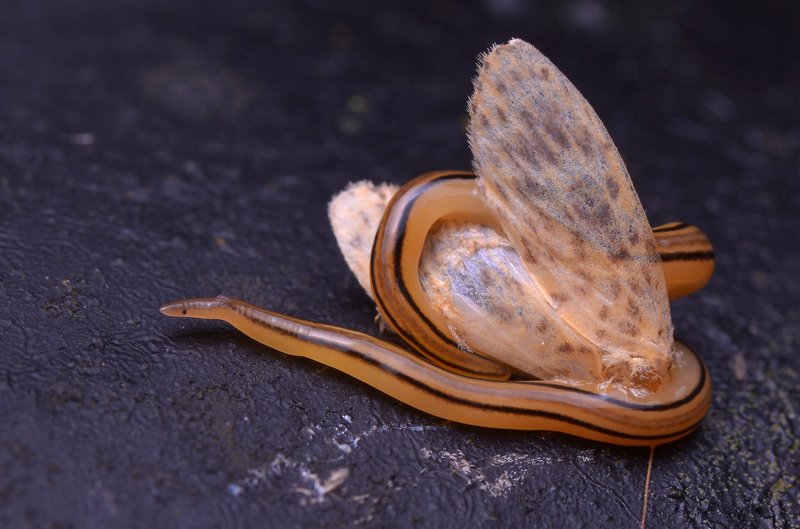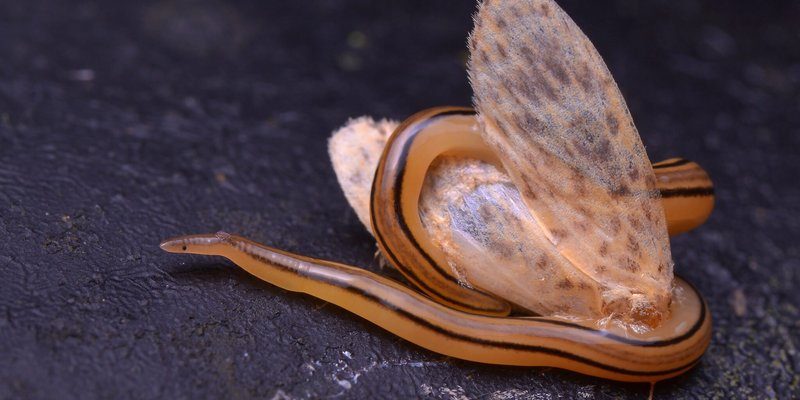
So, what exactly are these creatures doing when they eat? How do they catch their food? In this article, we’re diving deep into the documented feeding techniques of ribbon worms. We’ll explore their hunting methods, dietary preferences, and even a few surprising facts that make these worms worth knowing about. Whether you’re a marine biology enthusiast or just curious about the oceans, stick around—there’s a lot to uncover!
What Are Ribbon Worms?
Before we get into the nitty-gritty of how ribbon worms feed, let’s take a moment to introduce them. Ribbon worms belong to the phylum Nemertea, and there are over 1,300 species of them. These creatures can range in size from just a few millimeters to more than 30 meters long! To give you an idea, that’s longer than a blue whale! They have long, slender bodies that often come in stunning colors, making them quite the sight in their natural habitats.
Ribbon worms are typically found in marine environments, from tidal pools to the deep sea. They often bury themselves in sand or mud during the day, making them a bit elusive. When you’re out on the beach, you might not even know they’re there, but they play a crucial role in the ecosystem, helping to control the populations of small marine animals.
How Do Ribbon Worms Catch Their Prey?
Here’s the thing: ribbon worms are not your average hunters. They have developed some truly unique feeding techniques to catch their food. Most species use a specialized structure called a **proboscis**. This elongated, muscular appendage is stored inside their body and can be rapidly extended to capture prey. Imagine a slingshot—when they need to catch something, they pull back the cord (or in this case, their proboscis) and launch it forward to snag their meal.
Once the proboscis comes into contact with their prey, it releases a **sticky mucus** that helps hold the victim in place. Some species can even inject venom to subdue smaller animals. It’s a swift, efficient method that minimizes the energy they expend while hunting. Honestly, it’s almost like a secret weapon in their quest for food!
Types of Prey
When it comes to their diet, ribbon worms are opportunistic feeders. They mainly consume small marine animals, including:
- Worms
- Small crustaceans
- Fish larvae
- Soft-bodied invertebrates
Ribbon worms are not picky eaters, so their diet can vary widely based on what’s available in their environment. This adaptability is what allows them to thrive in diverse habitats. Let’s say you’re at the beach and come across a ribbon worm—you might be surprised to learn that it could be eyeing the tiny shrimp or other small critters hiding in the sand right beneath you!
Feeding Behavior and Strategies
Different species of ribbon worms exhibit various feeding behaviors and strategies, shaped by their environment and prey availability. For instance, some species employ a **sit-and-wait** strategy, remaining hidden and camouflaged until a potential meal wanders too close. Others might actively hunt by moving through sediment, seeking out their next bite with precision.
Interestingly, these feeding techniques are often dictated by the worm’s size and habitat. Larger species might use their proboscis to hunt larger prey, while smaller ones focus on tiny organisms. If you think about it, it’s a bit like how different animals on land adapt to their environments—some stalk their prey while others lie in wait.
The Role of Ribbon Worms in the Ecosystem
Ribbon worms may be small, but they play a significant role in their ecosystem. By preying on various organisms, they help regulate populations of smaller marine creatures. This is important because it encourages a balanced food web, and healthy ecosystems often operate best with a diversity of species.
Moreover, as ribbon worms consume detritus and dead matter, they aid in the recycling of nutrients back into the environment. Think of them as the “clean-up crew” of the sea! This nutrient cycling supports the growth of plants and other microorganisms, which ultimately benefits larger marine animals.
Surprising Facts About Ribbon Worm Feeding
You might think you know a lot about ribbon worms now, but here are a few surprising tidbits that might catch you off guard:
– Some ribbon worm species can regenerate lost body parts, including their proboscis. If they lose it while hunting, they can grow it back, ready to snag their next meal.
– Their **proboscis** isn’t just for feeding. Some researchers suggest that it may also play a role in defense, providing a way to deter predators.
– Ribbon worms have been known to consume prey much larger than themselves! It’s astounding how they can overpower creatures that seem out of their league.
These quirks make ribbon worms even more fascinating and underscore just how diverse the strategies can be in the animal kingdom.
In summary, ribbon worms are remarkable creatures with a variety of documented feeding techniques that allow them to thrive in their underwater environments. From their stealthy hunting methods to their important ecological roles, they remind us that the ocean is full of surprises. The next time you’re at the beach or reading about marine life, take a moment to appreciate these unsung heroes of the sea. Their unique feeding strategies not only contribute to their survival but also help maintain the delicate balance of marine ecosystems. So, let’s keep exploring and learning about these incredible creatures!

